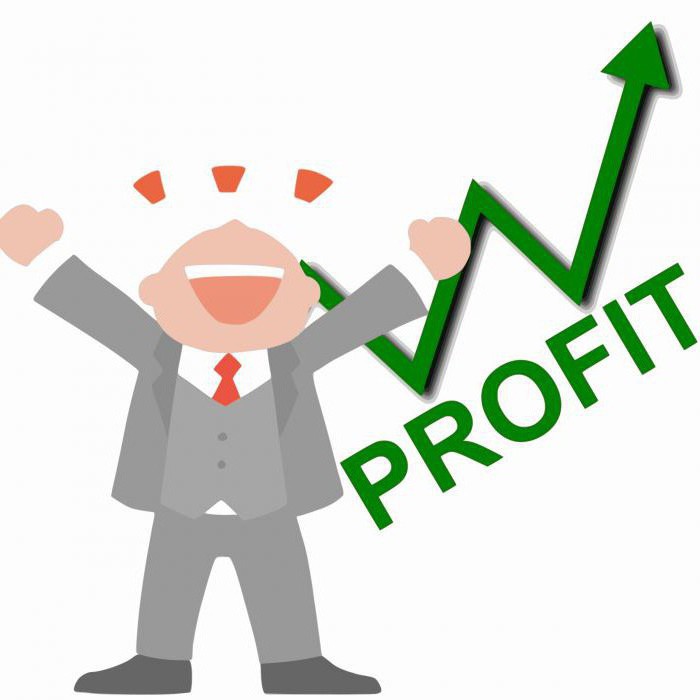One of the stages in the development of knowledge about labor processes in the enterprise management system should be the development of approaches to determine its level and to develop criteria for evaluating the effectiveness of measures aimed at increasing the level of working capacity and productivity of personnel. Improving performance contributes to staff motivation. Putting into practice the results of the study of the processes of motivation of workers will allow better use of the labor potential of enterprises.
The impact of motivation on work
Motivation is a combination of forces that force a person to do some work. These forces can have an internal and external character. The internal forces that cause a person to achieve the goal are called motives, and the external ones are called incentives.
The level of labor motivation is a value that characterizes the motivation of employees, their desire for work to achieve both personal goals and the goals of the company. Testing the approach to assessing the level of labor motivation of the personnel of enterprises makes it possible to empirically determine the range of values of the motivation indicator depending on the specifics and scope of the company.
What is a criterion?
At the preparatory stage of the study, it is necessary to develop criteria by which the effectiveness of the mechanism to improve a specific process in the enterprise will be evaluated. Efficiency criterion should be understood as a measure of effectiveness assessment, in which certain means are selected to achieve the task.
For the subject, the criterion becomes a guideline to which the evaluated phenomenon should strive in its development. The criterion is associated with the established task and the conditions for its implementation, it must establish and determine the level of achievement of the tasks.
Development of criteria for evaluating the effectiveness of an enterprise
By its nature, the criterion is qualitatively and quantitatively determined. When developing a criterion, a number of rules should be taken into account. Firstly, the name of the criterion should correspond to its essence. Secondly, the criterion must be clear and understandable, and it must also meet a specific goal and contribute to the maintenance of certain strategies or initiatives.

In addition, it should be ascertained whether the determination of this aspect of effectiveness is possible. If so, using what methods. It is advisable to establish whether the criterion can be expressed in mathematical terms and write down the formula; Is the measurement system understandable? is it clear what data is needed for the calculations. It is also necessary to establish how accurate the data will be, whether a certain loss of detail is acceptable, to determine how often such calculations should be carried out; establish whether this frequency is sufficient to track the impact of interventions on improving performance; determine where the data should come from to track the criteria; determine who is responsible for the collection, compilation and analysis of data; how will the data be used.
Integral indicator as a way to determine the effectiveness of work
There are many criteria for evaluating the performance of employees. One of them is the graphoanalytical method. The value of the resulting indicator determines the length of the vector, forming a pentagon of labor efficiency.Here, the indicators and criteria for evaluating the effectiveness of the company’s personnel are the main functions of management:
- planning;
- making decisions;
- motivation;
- control;
- organization.

If the values of all the resulting indicators are in the range from 1 to 2, then the level of labor efficiency is high, if all the indicators are in the range of 1-0.5 - the level of motivation is characterized as “average”, the level of efficiency is characterized as “low”, when the value of the resulting parameters are in the range from 0 to 0.5.
Pentagon application
A pentagon can have a regular and irregular shape. If its form is correct, the organization equally uses tools to increase labor efficiency in all management functions. The irregular shape of a pentagon means that one vector is developed more than others or all vectors are developed differently. This indicates the underutilization of labor potential in the enterprise.
The level of labor potential of workers is determined using an integral indicator, the value of which can be in the range from 0 to 2.5, from 2.5 to 5 and from 5 to 10. If the value of the integral indicator is from 0 to 2.5, this indicates about low potential. The range of 2.5-5 indicates an average level. A high level of labor potential is achieved with a value of 5, but for some enterprises - 7.

Achieving a high effect from the activities of employees
When making managerial decisions, it should be borne in mind that a low indicator of the level of labor potential of employees leads to low growth rates of labor productivity, and a high indicator is one of the prerequisites for achieving fast growth both by increasing motivation and by directly participating in decision-making, planning, organization and control of their activities.
It should be noted the growing role of labor motivation tools with the uncertainty of the future situation, insufficient awareness or dissemination of misinformation in the work team, lack of knowledge and experience in planning, lack of confidence in the financial and social stability of team members. The problem of achieving the necessary effect from workers is relevant not only for countries with economies in transition, it is worrying about progressive scientists and politicians, business leaders and managers all over the world.

The development of criteria for evaluating the effectiveness of activities in the face of increased competition is becoming very important. Wage growth, which occurs according to the growth of labor productivity or is slightly ahead of it, creates favorable incentives to search for the most advanced advantages in competition.
At the same time, one should not underestimate the social effect of incentive measures. The decrease in the motivating and stimulating role of wages and incomes leads to the opposite effect - a drop in labor productivity, inefficient use of working time, degradation of the quality of labor potential and other negative socio-economic consequences. The question arises of defining the main criteria for evaluating the effectiveness of workers, since economic and social dimensions have an impact on labor potential.
Criteria for assessing employee performance
The basis for the study of the effectiveness of labor motivation methods is a system of criteria characterizing the complex and systemic impact on the control object. These include the movement of personnel, their qualifications, as well as how improving the work of company employees will affect the basic economic indicators of the company itself.

In addition to all this, there are other criteria, for example, working conditions and its organization. Here it is necessary to take into account how many times the employee did not go to work for a disrespectful reason, how many times he was late. It is also necessary to pay attention to the number of employees who have a free schedule, and how many people at the enterprise work to combine.
Performance indicators
Given all the criteria for evaluating effectiveness, it is necessary to develop a system of indicators. In this regard, it is worth grouping all the criteria for the effectiveness of labor methods on the basis of homogeneity:
- staff movement indicators;
- social and psychological climate;
- economic labor indicators;
- labor organization indicators;
- educational qualification level;
- socio-economic and innovative activity.
To assess the effectiveness of methods aimed at improving the productivity of staff, it is necessary to conduct a study of qualitative and quantitative criteria for evaluating labor efficiency. Quantitative indicators include payroll, losses from marriage, total staff costs, etc .; to quality - job satisfaction, degree of freedom in decision-making and staff awareness of the enterprise. In order to obtain the necessary information about qualitative indicators, one must use the results of various sociometric or sociological surveys, for example, a survey to study the level of the motivational mechanism in a company.

The indicators of the educational and qualification level of personnel affect such economic indicators of the enterprise as the number of innovative types of products mastered, the costs of the enterprise, the volume of marketable products, capital productivity and labor productivity.
Economic indicators
The costs of improving labor productivity can not only increase the productivity of staff, but also contribute to the improvement of the entire company. The main criterion for evaluating the effectiveness of an enterprise is profit. The main task of any enterprise is to make a profit, which is why all measures aimed at improving individual processes in the company are aimed at this.

Economic indicators and criteria for evaluating the effectiveness of personnel and, as a result, enterprises play the most important role. The main indicators that can measure the effectiveness of measures to improve labor potential are the following:
- labor input;
- payroll fund;
- number of staff;
- working time fund;
- average salary;
- gross personnel costs;
- return on staff costs;
- return on staff costs.
Economic criteria
The economic criteria for evaluating the effectiveness of an enterprise are usually attributed to income, profit costs, the size of gross, sold and marketable products, profitability, return on assets, as well as how much the company uses its capacity. Of course, the main criterion is profit. The company's profit may increase either due to an increase in income, or due to a decrease in costs. But the most effective way to increase profits is to lower costs and increase revenues.

To achieve the goals, the enterprise management must take into account the orientation of the basic principles, which are the basis for analyzing the effectiveness of methods to improve staff productivity. These include efficiency, efficiency, consistency, objectivity, etc.
Criteria for assessing the effectiveness of operating system management
The purpose of the assessment is to obtain the necessary information about the effectiveness of the management mechanism in the enterprise. This mechanism is aimed at meeting the needs and goals of the company.It can become productive only if a harmony of interests, needs and goals of interested parties is achieved.
The purpose of the operating system is to ensure the effective implementation of the goals and objectives set by the company. The main performance indicator for the operating system is how the goals are implemented. To determine the effectiveness, it is necessary to quantify the goals, after which it is necessary to compare the actually achieved goals with what was planned by the management.

The selection of criteria and indicators for assessing management effectiveness is carried out individually for each enterprise, and the list of indicators in the assessment will vary. An example is the improvement of collective bargaining regulation, which may affect the improvement of conditions and remuneration.